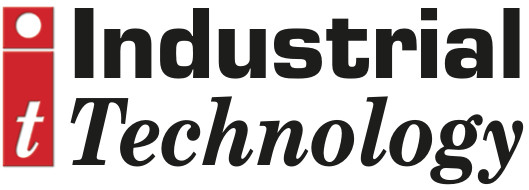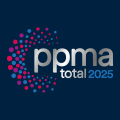
Posted to News on 31st May 2017, 00:00
Strengthening the weakest SCCR link with current-limiting devices
Equipment with an insufficient short-circuit current rating (SCCR) can pose a risk to personnel, equipment or create a fire hazard. New North American National Electrical Code (NEC) legislation requires the available fault (short circuit) current to be stated at the installation point, and equipment to be marked with its short circuit current rating. This reduces the chance that an equipment installation will not be compliant or approved.

Research indicates than 50% of equipment manufacturers only design to a typical minimum equipment SCCR of 5 kA, causing problems when the fault current of the incoming feed is orders of magnitude higher. Fixing this on-site can be expensive, time consuming and sometimes impractical. Designing an equipment SCCR plan or implementing an SCCR solution can be difficult, but it doesn’t have to be.
The SCCR is a key consideration for the safety of commercial and industrial equipment, and to minimize the risks associated with a fault. This rating identifies the maximum level of short-circuit current that a component or piece of equipment can safely withstand. If correctly applied, it should safely withstand a short-circuit condition without exposing personnel to fire hazard, flying debris, or shock.
Current standards and the expected changes
The NEC, the Occupational Safety and Health Administration (OSHA) and Underwriters Laboratories (UL) all provide guidelines related to SCCR. They have recognised the risk of faults and have added SCCR requirements to their standards to increase workplace safety, establishing equipment SCCR requirements for industrial control panels and other equipment.
For control panels, UL 508A Supplement SB establishes an approved method defining how the equipment SCCR is determined. It allows for current-limiting fuses or circuit breakers to increase component SCCR, but the rules surrounding the application of current-limiting devices can be confusing.
While marked current-limiting devices do limit the available fault current, they do not guarantee proper protection of downstream overcurrent protective devices unless they are tested together - called the series rating. UL 508A though prohibits the use of series ratings within the control panel, requiring any overcurrent protective device to have a sufficient interrupting rating for the available fault current. If not, using the current-limiting properties of a marked current-limiting device will not be acceptable or provide the control panel with an adequate SCCR.
The anticipated 2017 NEC changes include marking and documenting requirements that will make it easier for OEMs, industrials and inspectors to verify proper equipment SCCR protection.
The available fault current must be marked at the location where the following equipment types will be installed:
- Machinery
- HVAC equipment
- Elevator control panels
- Generator equipment
- Transfer equipment
- Energy storage equipment
- Battery systems equipment
The available fault current must also be documented where motor control centres or any other equipment with an industrial control panel is located.
Determining the equipment SCCR
Within the control panel, there are devices that do not provide overcurrent protection, such as motor starters, distribution blocks, and switches. These have a component rating known as an SCCR that defines the level of short-circuit current it can safely withstand when protected by the specified overcurrent protective device as indicated on its SCCR marking.
Devices that provide overcurrent protection, such as breakers and fuses, have an interrupting rating that indicates the amount of fault current they can safely interrupt. Some overcurrent protective devices are marked “current-limiting” and may be used to improve the SCCR of a branch circuit component. In the event of a fault, these devices will react faster than typical (non-current-limiting) overcurrent protective devices.
SCCR can be determined by either testing or analysis. As testing is often cost prohibitive, analysis is the most common method. UL 508A Supplement SB provides an analysis method that considers the “weakest link” as the basis for the determining equipment SCCR. The equipment SCCR is limited to the lowest rated component SCCR or lowest rated overcurrent protective device interrupting rating in the control panel.
There are three key considerations to determining equipment SCCR: component SCCRs, the interrupting rating of the overcurrent protective devices, and the effect of current-limiting devices in the feeder circuit. Product markings or manufacturer’s installation instructions provide component SCCR, while the interrupting ratings can be found on the overcurrent protective device markings.
According to UL 508A SB4.3, current-limiting devices in the feeder circuit can be used to increase branch-circuit component ratings, but not for components in the feeder circuit. The peak let-through current of a current-limiting overcurrent protective device in the feeder circuit is compared to the downstream branch circuit component SCCR. If the peak let-through at a selected prospective short-circuit current is less than or equal to the component SCCR, then the component SCCR can be raised to the selected prospective short-circuit current.
Because a fuse can be easily incorrectly replaced, the manufacturer’s published let-through data cannot be used. With circuit breakers marked as current limiting, the manufacturer’s data can be used.
The SCCR of a contactor, overload relay, variable frequency drive, or any other branch component can be improved. The interrupting rating however, for circuit breakers and fuses, or the SCCR for Type F Combination Motor Controllers cannot be improved by an upstream current-limiting device, even if they are located in the branch circuit.
Another method is to use power transformers to increase branch circuit SCCR, but is not commonly used in control panel due to size restraints. For other applications it can be as it lowers the available fault current. Depending on the transformer, the available fault current on the secondary winding may be less than 5 kA, making the default equipment SCCR of 5 kA acceptable.
When SCCR should be implemented
Early consideration of the SCCR is high recommended, preferably at the design stage, as it once equipment is installed it is difficult, time consuming and expensive to increase the SCCR. For US installations, achieving SCCR compliance can be challenging, especially if the equipment is a standard design, as the actual available fault current can vary. It is a best practice to plan for a worst-case condition - the largest expected available fault current and can be accomplished two ways.
The first is to select components that will result in an overall equipment SCCR sufficient for the worst-case condition. The second way is to design the equipment control panel such that a specified (and the panel marked accordingly) current-limiting fuse or circuit breaker may be applied upstream of the equipment. This approach may result in more efficient equipment cost, and more flexibility in terms of component selection, allowing installers to have the option to apply a feeder device upstream of the panel, without needing to consult the manufacturer.
Conclusions
Equipment control panels that meet the SCCR guidelines are designed to prevent shock, fire, and impact hazards if a short circuit should occur. By considering SCCRs at the beginning of a project, OEMs are better able to control project costs and duration. Simply meeting standard equipment SCCR requirements (typically a minimum of 5 kA) may not be sufficient.
As an international company, Eaton offers customers the most comprehensive experience to achieve compliance through field-based sales and technical resources as well as an extensive range of code-compliant products and solutions to meet SCCR needs. For example, these include a complete portfolio of Bussmann series fuses as well as circuit breakers, motor circuit protectors and combination controllers, and current-limiting overcurrent protective devices. Working with an international partner is especially important to machine builders exporting worldwide.






